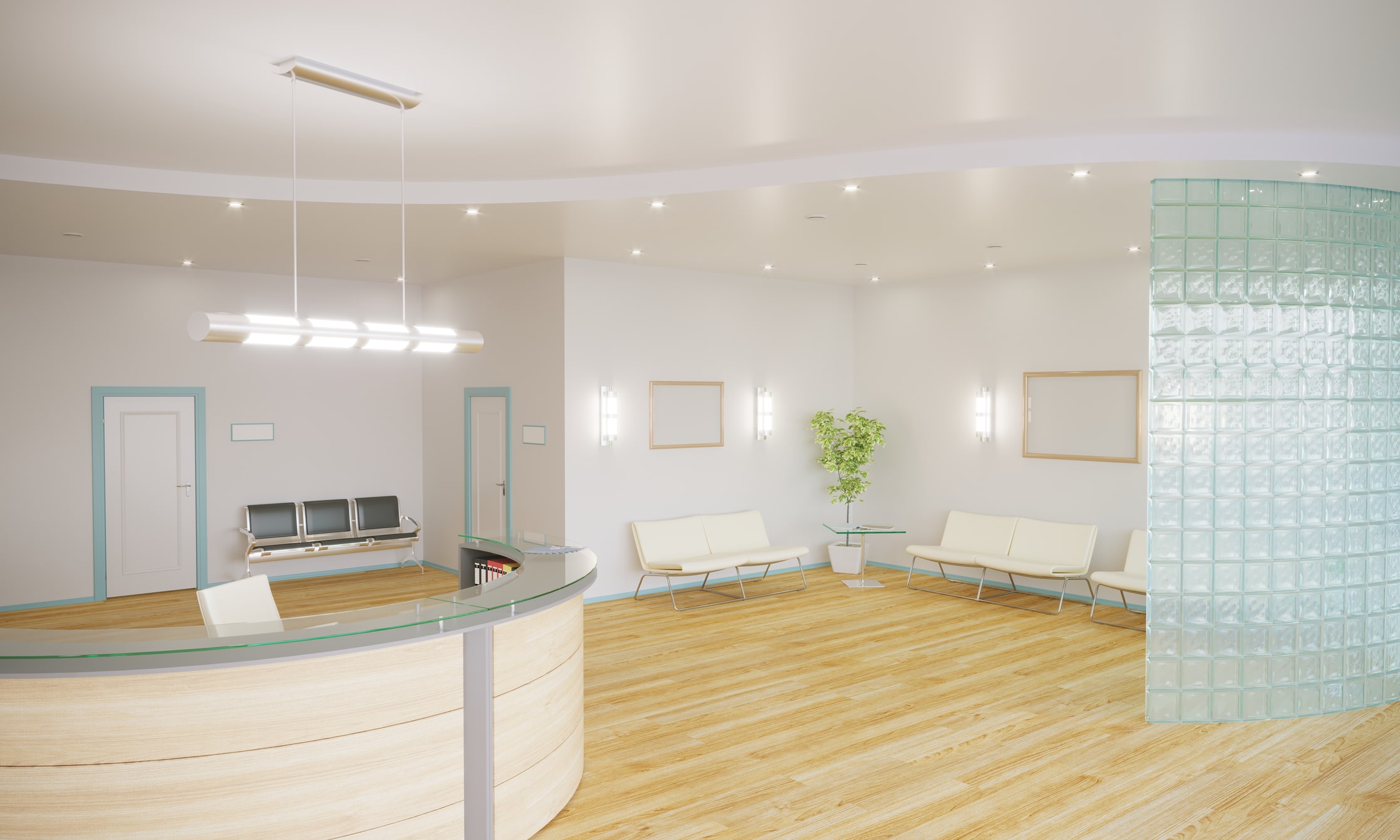Adam Lueken

A great patient experience definitely includes personalized care and outstanding customer service. Another important aspect is something you may not immediately jump to – your office design and aesthetic. Your design style and features can impact how your patients see your practice, and ultimately, you and your team. You want to make patients feel calm and secure, as happy patients mean repeat patients. So even though simple decoration or design choices may seem insignificant, they may have a deeper effect than you think.
If you feel your practice design is underutilizing your spaces and missing an opportunity to drastically improve the patient experience, here are some aesthetic elements and features you can think about.
Consider the Space You Have to Work With
How space is used in your office can affect patient perception. Many contemporary designs focus more on open areas that have more air and light flow. More exposure to sunlight and less clutter can have a calming effect on visitors to your office. This doesn’t have to compromise your ability to treat patients or do the necessary administrative functions, it’s just about using space the right way.
Adaptable spaces, where furniture and fixtures can be moved and rearranged to better suit patients’ individual needs, can be beneficial. For example, if a family is waiting together, they can rearrange seats to get closer. Or those who want more space or privacy can rearrange based on their preferences.
Consider Your Colors
When people think of healthcare, they may think of sterile white colors which aren’t always the most welcoming. This can be especially true in waiting rooms or areas where patients spend the most time – places where you want patients to feel welcome and calm.
Different colors can have different effects on people. Blue is often considered to be the calmest color and provides an aura of trustworthiness to those who wear blue-tinted clothing. In-room design, blue has a similar effect and can be considered for rooms requiring calmness or stillness. Green is associated with tranquility, health and nature, so it can be a great choice too. Pale greens have a calm, soothing effect, and olive-colored greens promote thoughtfulness and serenity. Light browns and beiges can imply earthiness, so it’s useful for bigger areas. Plain white can be softened into textured cream or ivory, and combined with other neutral colors to create pleasing, comfortable environments.
Other Things to Consider
Most of your patients have smartphones, tablets or laptops that go with them everywhere for personal entertainment and work. If you’re not already, providing free high-speed Wi-Fi for patients will make a big difference in these patients’ satisfaction. Also, offering some coffee and snacks can be a nice touch, even if it’s just a small table with a box of pastries, tea, coffee, etc. You can also have a mini-fridge stocked with some bottled water.
To make your decor interesting, consider adding paintings, photos or murals on the walls. Combined with a little soft music, interesting decor can make a quiet wait more passively entertaining. Aquariums are also a classic form of passive entertainment.
For patients with children, having a kid’s play area can be helpful. A puzzle table, a bookshelf and board games, or even an old video game console with kid-friendly games are all excellent ways to keep children entertained..
A patient’s first impression can be affected by the environment you’ve created in your practice. By providing comfortable and considerate seating, interesting aesthetics, convenient features and quiet entertainment, you can make them feel welcome from the start (and want to come back).
Need some help setting up your practice for success? We’re always a phone call or click away to support your needs. Schedule a consultation with one of our practice management experts today!